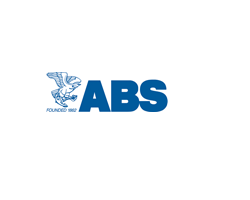ABS New Ice Loads Monitoring Guide
Class society ABS announces the release of a new Guide that assists ship operators in selecting, installing and using systems that monitor local icebelt stresses and alerts crew as to the severity of potential ice impacts.
Monitoring systems are becoming a valuable tool for officers navigating vessels in Arctic waters. The sophisticated programs provide the crew near real-time data of local stresses, often visually displaying hull and structural loads as a percentage of permissible levels.
“These monitoring systems have been used in research applications for quite some time and have matured in recent years,” says Roger Basu, Director, ABS Shared Technology. “They are now proving themselves as a valuable asset for the crew in real-world applications and are becoming more widely available in the marketplace.”
While these systems are not expected to be a replacement for experience and sound judgment, they are seen as an aid for navigators in their routing planning. “As more operators elect to have these tools on board it is important that they are properly installed and monitored. This Guide will provide them with a solid foundation for establishing their implementation plan” says Basu.
The ABS Guide for Ice Loads Monitoring Systemsdescribes the ice loads monitoring process and the procedures for collecting and recording the data. It also provides guidance as to how the information gathered should be processed, evaluated and presented to enable the crew to better measure vessel performance in ice.
“Installing a system to monitor ice loads gives operators a tool that can assist navigators in determining safe speeds and maneuver in dense, ice covered waters,” says Basu. “In addition to safety, these systems can provide economic benefits through speed optimization, better fuel economy and less downtime occurring from repairs to damage resulting from ice impact,” Basu adds.
Ship operators may elect to apply optional notations to their vessels to demonstrate that their system evaluation, implementation and use has been made in accordance to the Guide. Recognizing the variability in these systems, the notation ice loads monitoring (ILM) may be augmented with additional extensions to denote the number of additional strain gauge locations; that the monitoring system is capable of measuring ice impact loads in the area of highest rotation speed when the vessel is turning; or that the system will also measure hull girder bending loads for impacts to the vessel’s bow, such as when a vessel must ram large ice features to progress forward. Additional extensions are available to denote that the monitoring system has the capabilities to record stress time histories and ice impact pressure time histories.
Source: ABS











